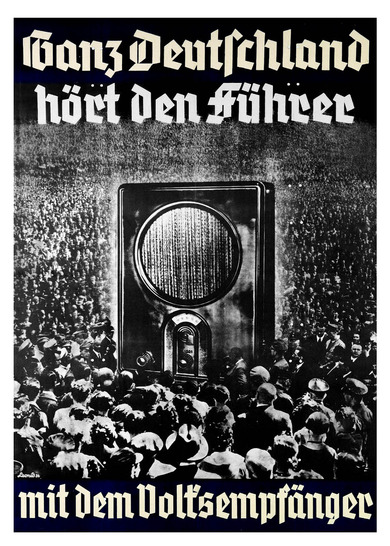Radio as a mass phenomenon
Radio as a mass phenomenon
The discovery of electromagnetic waves by the German physicist Heinrich Hertz in 1887/88 paved the way for wireless telegraphy and, ultimately, the development of radio. Following pilot broadcasts during the First World War, a Christmas concert was broadcast on 22 December 1920 from Königswusterhausen as the first German civilian broadcast. In the years that followed, the federal broadcast network was created while basic rules for radio reception were drawn up. Moreover, intellectuals such as Bertolt Brecht engaged in debates over potential objectives of use for the new technology.
The Nazis, among others, developed the radio into a nationwide mass media. The Volksempfänger VE 301W, which propaganda minister Joseph Goebbels had commissioned from the Seibt company, was presented at the 10th Great German Radio Exhibition in Berlin in 1933. The aim was to reach as many households as possible via radio – above all in order to influence the masses in terms of their ideology. From July 1933, an advertising banner hung in the shop windows of German radio dealers with the heading "All Germany listens to the Führer with the Volksempfänger". Despite the negative experiences of history, radio has continued to be abused as a medium for inciting the masses, including in recent times. For example, Rwanda's state radio openly called on its listeners to commit genocide against the Tutsi ethnic minority in 1994.

